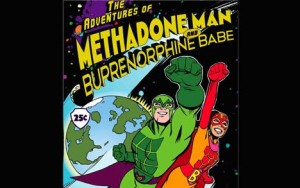 To mark World AIDS Day the state government of Gujarat, in India, is introducing a free opioid substitution program to registered addicts in the city of Surat. IV heroin users will be given an oral formulation of either buprenorphine or methadone, with the dual aims of reducing the use of needles and aiding recovery.
To mark World AIDS Day the state government of Gujarat, in India, is introducing a free opioid substitution program to registered addicts in the city of Surat. IV heroin users will be given an oral formulation of either buprenorphine or methadone, with the dual aims of reducing the use of needles and aiding recovery.
Both substances are used to treat addiction; as Ritambhara Mehta, head of the psychiatry department at Government Medical College Surat explained, they “[work] against other drugs consumed after taking it. It doesn’t let the patient feel the high once consumed.” Greater access to these treatments is clearly positive, with a long history of their administration having demonstrated significant benefits, including “a reduction in deaths, HIV infection, crime and drug use with improvements also seen in physical and mental health and social functioning.” They are also more effective than any other option at attracting and retaining addicts.
While hardly a new idea, access to these treatments remains a significant problem, with “less than 10% of those in need of treatment” receiving it, according to the World Health Organization. It is presently available at only 35 centres across India, a country with a population over one billion, one million of which are registered heroin addicts, with estimates of the total addict population reaching as high as five million according to a UN report.
The expansion of India’s capacity to provide opioid substitution treatment should be applauded, but we might use this opportunity to think about how we can improve their availability and efficacy, globally.
Barriers to Access
Across the world, many addicts self-administer substances like buprenorphine and methadone to treat addiction due to difficulty accessing these treatments through official channels. Programs like the one beginning in Gujarat often have highly restrictive criteria. A study of one such program in Sweden found many addicts being turned away because they “had hidden their drug use from friends, family, and colleagues and lacked documentation in the form of contacts with healthcare, dependence treatment, social services, or the police.”
In addition, even those who gained access were often subjected to involuntary discharge for “missed clinic appointments, disorderly or threatening behavior, and drug crimes.” Evidently, barring people who exhibit behaviour typical of hardcore addiction from addiction treatment is not the wisest of options.
Finally, and this may be the greatest lesson for improving opioid substitution programs, “all the interviewees voiced the opinion that [Opioid Substitution Therapy] subjects patients to control measures and authority, and some even characterized the treatment as degrading.” If access to methadone and buprenorphine reduces death, crime, and the spread of HIV, then it is well worth considering making it available to those who do not wish to subject themselves to the scrutiny and restriction of freedom of government-run programs.
This is to look only at the consumer side. In many countries, strict and often punitive regulation of substitution treatments is a hindrance to providers, as can be seen in Germany, where poor training and a lack interdisciplinary cooperation are also leading to a dwindling number of physicians able to supply the treatment
Lastly, while buprenorphine and methadone have the highest rate of retention, they do not attract or retain all addicts. They may benefit from supplementary treatments like oral diamorphine, and greater legitimacy for treatments which do not aim at abstinence.
Still, all things considered, the expansion of treatments for addicts is always a positive and welcome development.
